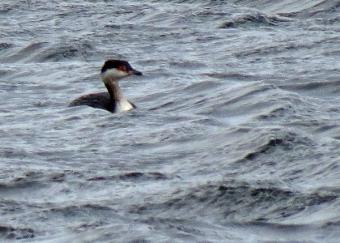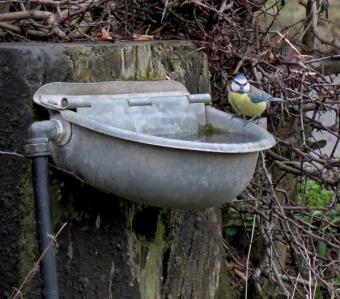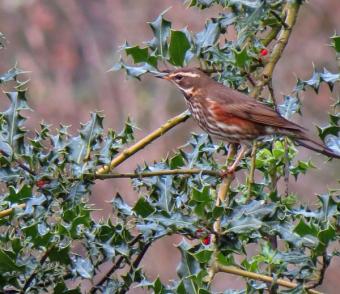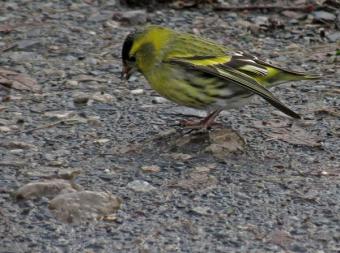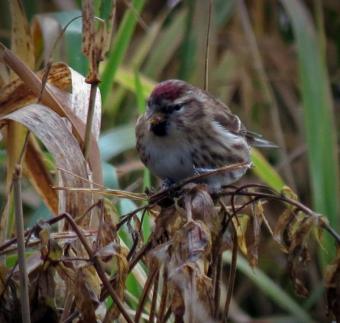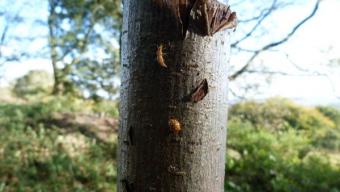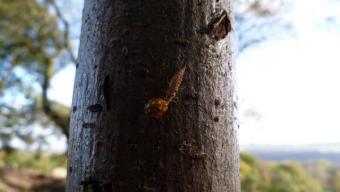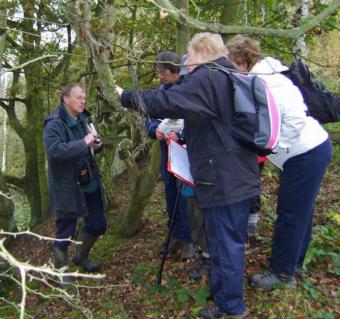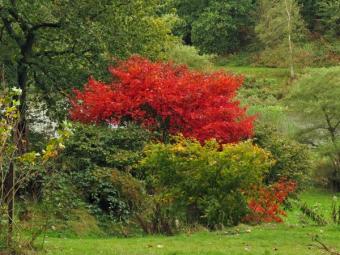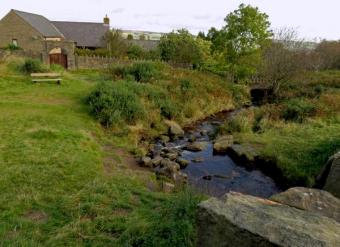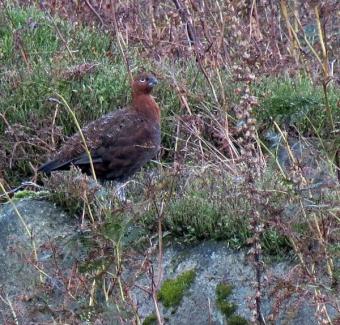WFV Tuesday 5th March Fountains Abbey and Studley Royal
 Fountains Abbey Arches
Fountains Abbey ArchesWhat a brilliant day! Paul Hudson's weather predictions had turned out to be accurate. Fog and mist in the morning to be replaced by sunshine from midday onwards. On arriving at the Studley Roger car park we divided into two groups - those who planned to walk around the grounds of Fountains Abbey NT property and those who planned to complete the circular seven bridges walk in the environs. Six of us choose the walk which took us initially down the main drive with its avenue of lime trees. Unfortunately the mist shrouded Ripon Cathedral in the distance. At the bottom of the drive we took the farm track to the right passing a bank of snowdrops lining a field edge. A solitary curlew was spotted in the middle of the field. We walked through woodland to follow the banks of the River Skell and crossed over seven bridges. A grey wagtail was seen bathing in the fast flowing river. Alice took considerable interest in the lichens on the stone walls and trees. We admired the avenue of sweet chestnut trees with their contorted trunks and incised bark.The party emerged at the large ornamental lake where golden eye, tufted duck, greylag and canada geese were seen. It was an uplifting walk. At last we'd got it right and choosen a lovely day to be out and about.
Margaret
Our group chose to enter the Abbey grounds via the Studley Royal entrance. This proved to be wise as we were greeted by a National Trust guide who gave us an excellent introduction to the history of the site. None of us had realised that the World Heritage designation had been awarded not for the Abbey ruins but for the almost unique water features.
 JackdawWe headed alongside the foot of the lake towards the Abbey and soon took a steep but short uphill path that led us past various features such as the Octagonal Tower and Ann Boleyn’s Viewpoint. By this time any lingering mist had dissipated to leave stunning views of the water gardens and abbey. Because there was no breeze, the water acted in its intended way as a mirror for the evergreen vegetation. These gardens had been designed to be green the whole year round.
JackdawWe headed alongside the foot of the lake towards the Abbey and soon took a steep but short uphill path that led us past various features such as the Octagonal Tower and Ann Boleyn’s Viewpoint. By this time any lingering mist had dissipated to leave stunning views of the water gardens and abbey. Because there was no breeze, the water acted in its intended way as a mirror for the evergreen vegetation. These gardens had been designed to be green the whole year round.
Akram who had rejoined the group after an absence of over 3 years, due to health reasons, stayed on the lower path and we soon met up with him when we made our descent. Another attendee was Virginia, a young volunteer BEES worker from Spain who was making her second field-visit with the group.
Birds seen included a Buzzard, Nuthatch and Little Grebe. On the lake were Gulls, Mallards, Swans, Coots and Tufted Ducks. A solitary Primrose was spotted by Janet. Much evidence of ongoing work was observed such as removal of some of the Yew trees and the creation of Bosquets.
After a visit to the Abbey Tearooms we made our way back via the ruins where we investigated several of the rooms including the Documents room.
John Gavaghan


